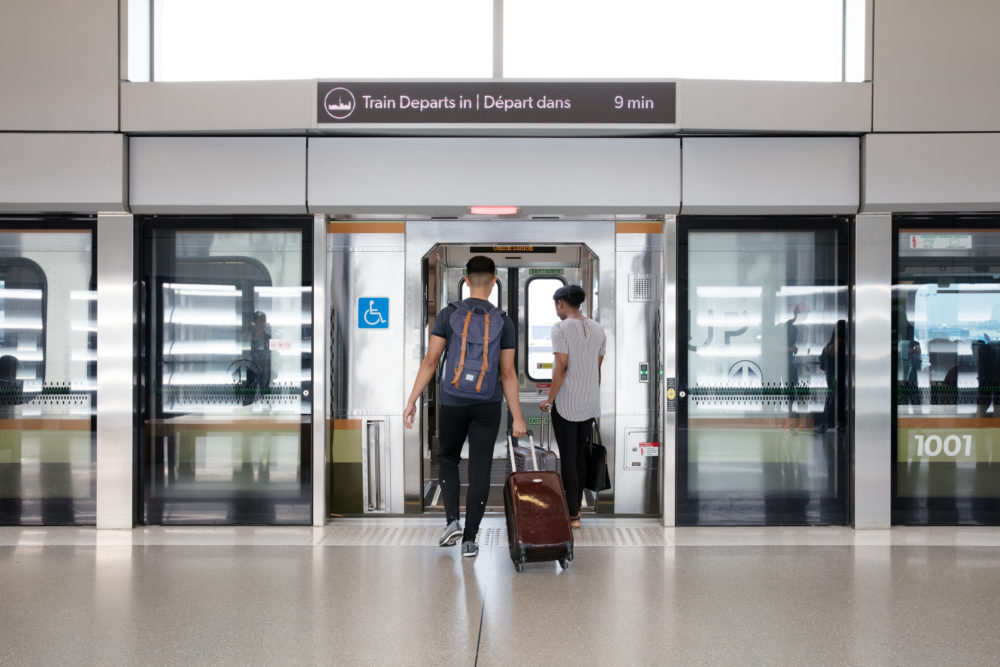Blog
How UP Express Became a Fixture For Toronto Travelers
January 28, 2019Nathaniel Ibitowa counts down the minutes.
They’re displayed on a nearby monitor inside the UP Express waiting area, which shoulders up to downtown Toronto’s iconic Union Station.
Trains come and go against a glass wall. Suitcases are pulled along like stubborn pets, and someone pours a cappuccino at the nearby coffee bar.
The programmer is on his way to Toronto Pearson International Airport, before flying off to Minneapolis and awaiting family celebration for his nephew who’s graduating from an IT program.

But for now, Ibitowa watches the clock and waits to get there. So minutes count. An important part of that journey – and saving time – is UP Express.
“I don’t have to worry about being stuck in traffic in a cab,” he says. “I know how long it will take me. “I’d rather this.”
He’s not alone. Annually – seven days a week and every 15 minutes like clockwork – he’s among an estimated 3.5 million customers who use UP Express.
Bridging the gap between two major Canadian transportation hubs – downtown Toronto’s Union Station and Canada’s busiest airport – the idea was to help cut down on gridlock and get the region moving. It was identified as a priority project in Metrolinx’s regional transportation plan.
To accomplish that took a remarkable amount of planning, creative scheduling, and technological know-how. It meant new overpasses and underpasses, as well as the reconstruction and upgrading of several bridges.
Each trip takes 25 minutes and uses Tier 4 diesel engine technology, which is the most emission-friendly diesel equipment available.
UP Express also taps into those who work in businesses around Pearson. That area is Canada’s second-largest employment zone. More than 300,000 people work there, and many take meeting trips downtown. And they don’t like to be stuck in traffic either.
While still a relatively young system, UP Express has become part of the daily workings of transportation into and out of Toronto. For many, it’s now a given rather than an option.
“In a few short years, UP Express has become an integral part of many people’s lives, and the travels they take. That’s been our ultimate vision all along,” says Leslie Woo, chief planning and development officer for Metrolinx.

“At the same time, we’ve been increasing rail service across the whole region through our GO Expansion program, bringing even more convenient travel options to residents and visitors alike.”
And the service is expected to continue to grow, along with the cities it serves. Metrolinx is planning for the future electrification of UP Express.
That would make traveler, and proud uncle, Nathaniel Ibitowa happy. He often uses the service, and likes the quick ride – and the precious minutes it saves him.
“Even quicker would obviously be even better,” he says, as the timer on the nearby display signals the next UP Express train pulling in beyond the glass wall.
“But right now, I can’t complain. This is a good way to travel.”
The tale of UP Express, by the numbers:
• 4 – Number of stations
• 23 – Number of route kilometers
• 1,120 – Number of weekly trips
• 24.89 – Average trip time in minutes
• 3.5M – Annual ridership


